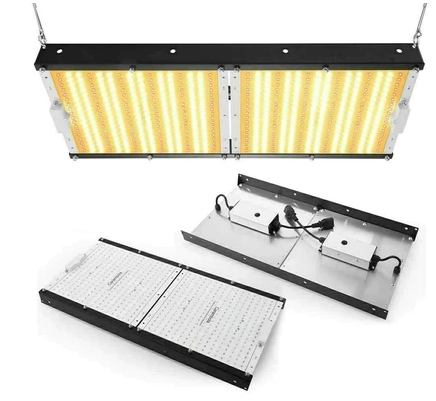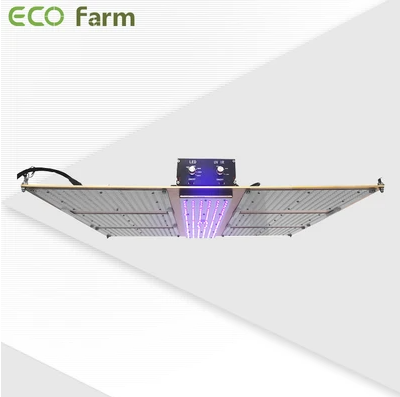The grow light will help the plants in penetrating enough spectrum for photosynthesis. The spectrum it provides is the same as the sun or a little that need for cultivation. Not all spectra are necessary for every plant and produce fruits/flowers. It depends on the plants needs.
How to choose the best LED grow light: there are so many important factors. Here are the ones that are most critical.
The Needs of the PlantLight cycles can seriously impact your plants’ growth and potency. Some need full light from a high-intensity source, and others get dried out or burned with too much, so make sure you know what you need from the outset.
A full spectrum LED grow light will help ensure maximum growth. Ideally this kind of light will have red and blue spectrums, as well as IR and UV light. (If you don’t grow from seed or germinate your seeds outside you might be okay with just red and blue light, but full spectrum is always preferred.) Better still, you’ll be able to control which spectrums it emits, when.
Energy Efficiency
Full spectrum LEDs are also more energy-efficient, typically. They are durable, usually run cool without additional fans, and cost less in electricity. Your grow lights will need to be operating for 18 hours every day at times.
The higher their output (wattage), the more power you’ll be using, but not proportionately. In other words, if you need 1000 watts instead of 500, you still won’t see twice as much power consumption.
Control and CustomizationRemember that you’ll be changing the lighting cycles depending on the growth stage to ensure that your plants thrive:
- Seedling stage: 16 hours on/8 hours off
- Veg stage: 18 hours on/6 hours off
- Flowering stage: 12 hours on/12 hours off
Don’t fight with manufacturer specifications, especially when it comes to coverage area. Your LED grow light system simply has to cover the right space for your plants.
Remember, if you’re growing with a hydroponic system, you need to have access to the right power and water sources for that system and your lights. This can demand some planning in a smaller space.
As well, if you’re selecting a light not on this list, read feedback and reviews on the actual coverage of the system. Occasionally there can be a discrepancy in this area, as we’ve discussed above.
Balancing Your Budget With Buying Good Equipment
This is tricky, but obviously important. Higher-end lights often produce better results, but a budget only works if each piece fits. Newer growers may want to select less costly grow lights to gain experience. Growers who already know what they prefer and need for their crops may go with a higher-priced option.
An LED grow light is not the only component you’ll need for your indoor grow operation. Your budget also has to cover fertilizers, filters, grow tents, soil, nutrients, and various other supplies. This means that blowing the whole budget on the best possible light isn’t an option—but directing as much of the budget toward a quality LED grow light as you can should be your goal.
Since quality is the goal, brand matters. In this vertical, the best brands develop loyal customer bases and generate solid reviews. They also frequently address feedback that’s less stellar. Look for this kind of brand strength online if you’re not sure about a light system or deciding between great options.
- Full-spectrum light output
- Passively cooled light bars allow for versatile application
- Wet-rated
- Easy vertical and horizontal installation
- Quality components throughout design
- 5-year warranty
- Dimmable feature requires use of additional adapter (not included)
- Expensive option for home grows
- Top of the line LEDs
- Fully programmable
- Remote controlled
- Price (but it’s worth it)
5000 watts on a 5′ by 5′ coverage space is about the same as sunlight. In other words, the Sun generates incredibly powerful light, and that’s tough to duplicate inside. LED technology is currently the best-suited indoor lighting technology for the challenge.
Cannabis plants love light and can take quite a lot of it, and that you’ll need to balance factors such as light and heat against cost and ability to live in the space, if you do.
Typically, one 1000-watt LED grow light is the minimum for a 4′ by 4′ grow area. One 600-watt LED grow light is about right for a 3′ by 3′ space.
However, you could technically put up to 4000 watts over a 4′ by 8′ growing area—if you could manage the heat load. The room can’t get so hot that your plants’ foliage suffers, so balance your cooling system with the number of lights and heat load they generate.
The best indoor led grow lights are the ones for indoor plants if you want to grow fruits, flowers, and vegetables. Nowadays, the large commercial sectors are using LED lighting technology for large yields. That’s how they control the growth of plantation, crops, fruits, and flowers.


























